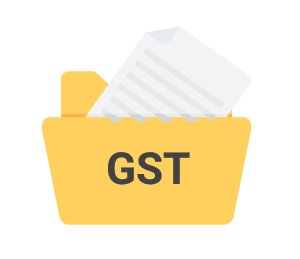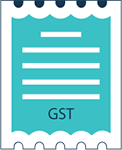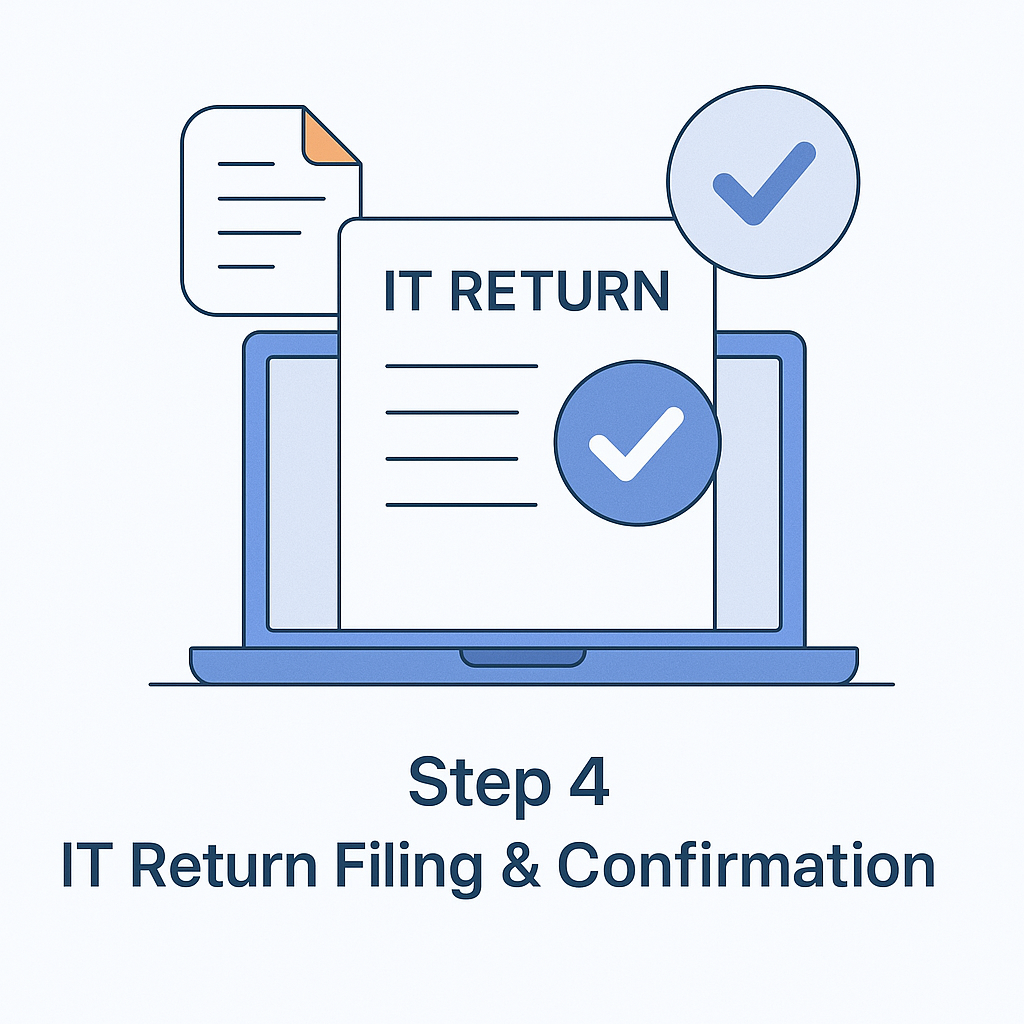
Complete Guide to the Goods and Services Tax
Defining GST
Goods and Service Tax or better known as GST is the new taxation service planned to impose on selling, manufacturing and using good and services. It has designed to replace all the current indirect taxes imposed on goods and services across India. It’s a kind of value added tax imposed by different countries by various goods and services, but the charges are different for different countries. Business entities providing goods and services to the consumer collect it from them and submit it to the government.

Get the detail process of System of GST Registration in India Get Details
Get GST Solutions for your Business
- Seamless Migration to GST
- Expert Assistance over Chat and Email

GST in India
In sub-section (1) & (2) of Section 94 of the Finance Act 1994, Central Government has specified the rules for collecting and assessing Service Tax across India.
The concerned rules are discussed here in brief:
Rule 1: Short Title and Commencement
The rules stated in here were made to assess service tax and are Service Tax Rules 1994 and it came into effect on 1st July 1994.
Rule 2: Definitions
This section refers to the various definition and terms used in the Finance Act such as “Act”, "assessment", “banking company”, “body corporate”, “financial institution”, "Form" etc. It also describes "Half year" meaning which indicates the period between 1st April to 30th September or 1st October to 31st March of a financial year. And "quarter" indicates the period between 1st January to 31st March or 1st April to 30th June or 1st July to 30th September or 1st October to 31st December of a single financial year.
Rule: 3 Appointment of Officers
Central Board of Excise and Customs may appoint a central excise officer if needed to maintain the rules for taxable services.
Get details of Filing for GST Returns in India Get Details
Rule 4: Registration
Service tax registration is mandatory for every person who is liable to pay service tax. the registration process should be done using the application Form ST - 1 within 30 days from the date of service tax is charged.
Rule 4 (A): Taxable service to be provided or credit to be distributed on invoice, bill or challan
Every registered service provider must have to issue a signed invoice or bill or a challan to the service receiver which will contain the name, address, registration number, name of the recipient, address of the recipient, product description, cost of service provided and the tax amount.

Rule 4 (B): Issue of Consignment Note
While providing, services related to goods transportation, the provider must issue a consignment note.
Rule 5: Records
Central Board of Excise and Custom must need to accept any record that contains computerized data that is maintained and provided by an assessee.
Rule 5 (A): Access to Registered Premises
Any officer with the authorization of commissioner will have access to any premises to complete verification and scrutiny work required for revenue protection.
Rule (6): Payment of Service Tax
Service tax must be paid by the 5th of every month to the central government if paid physically by cash or another mode. In the case of online submission, it needs to be paid by the 6th of every month.
Rule 6 (A) Export of Services
If the service provider is situated in the taxable territory of India and provides services to a recipient situated in abroad then such service providing will be considered as export of services.

Rule 7: Returns
Every assessee must file a half-yearly return by the 25th of the following month when half-year completes for them. The half-yearly return has to submit in Form ST-3 or ST-3A with a copy of Form ST-6 in triple copies for the months covered in the half-yearly returns.
Rule 7 (A) Returns for taxable services provided by transport operators
Transport operators who provide services or goods must file a six-months return and it is in effect from the 13th May 2003. Not filing such return will lead to penalty charges.
Rule 7 (B) Revision of Return
A revised return must be filed with Form ST-3 to edit or modify or correct any mistakes within 90 days from the return submission date.
Rule 7 (C): Amount to be paid for delay in furnishing the prescribed return
If a late return has been filed within the 15 days from the prescribed submission date then, a penalty of INR 500 need to be paid. If the late return filing gets delayed, then a penalty of INR 1000 need to be paid. If the late return exceeds 30 days from the submission date, then the penalty will be INR 1000 + 100/month till you submit it.
Rule 8: Form of Appeals to Commissioner of Central Excise (Appeals)
Form ST-4 need to be used to appeal to Commissioner of Central Excise under section 85 of the Finance Act 1994.
Rule 9: Form of Appeals to Appellate Tribunal
Form ST-5 need to be used to appeal to the Appellate Tribunal under section 86 of the Finance Act 1994.
Rule 10: Procedure and facilities for the large taxpayer
The large taxpayers must submit a separate return for each of their registered premises and may require producing records for verification whenever asked.
The Advantages of GST for Citizens and for the Economy Get Details
Goods and Services Tax Bill and Act
The GST bill is designed to form a single Pan-India taxation system for all goods and services which will replace all the current indirect taxes. It will also replace the system of multiple taxations which is currently levied on goods and services.
The GST act, which is also referred as The Constitution (One Hundred and Twenty-Second Amendment) Bill, 2014. Implementing this act will give tax imposing law on goods and services power to the Parliament and state legislations. This will ultimately simplify the goods and services taxation process in India.

GST Bill Approval Process
The GST bill was introduced on Lok sabha by 2011 and was passed by Lok Sabha on 6th May 2015. In Rajya Sabha, the bill was cleared on 3rd August 2013 with approving that central and state government will be able to levy GST on goods and services. After Rajya sabha, it needed Lok Sabha to ratify the bill again and it also required at least 15 states to support the bill before implementing the act. After ratification, it needed the President of India to constitute a GST council comprising of the Finance Minister, Minister in charge of Finance/Taxation, Minister of State in charge of Revenue, and other ministers nominated by the states.
The council was made to recommend tax rate, exemption, threshold, related laws, and discounts. The draft of this bill have been recently revised and the revised draft is accessible from the public domain. Once the President of India approves the bill, parliament will pass legislation for CGST and IGST. Then all Indian states and Union Territories will pass legislation for SGST. After all the legislations get passed, a synchronized implementation will be negotiated between the center and the states. GST act will be then officially come into force across India.
Key Features of GST
- It will subsume all the indirect taxes currently levied on goods and services with affecting a single taxation law for them.
- The “declared goods of special importance” will be included under this concept as described in the Indian Constitution.
- The inter-state and intra-state transactions of goods will be integrated under one umbrella.
- In the case of inter-state transition of goods, CGST will be levied on them.
- An additional 1% tax will be levied on goods supply in case of inter-state transactions which will be collected by the center and Center will distribute that amount to the goods origin state to compensate the loss faced due to GST transition.
- It will not be applicable on Petroleum, petroleum products, and alcohol products.
Get the detail of Accounts and Records Maintained Under GST Law Get Details
How GST Works
GST will abolish different taxation system currently active in various states currently and will chain the whole country under one taxation system. All the indirect taxes will be clubbed into two levels of GST, CGST, and SGST. As per this act, a dealer will be able to claim a refund on taxes paid in different stages of product value addition. And the consumer will pay the GST charged only by the last dealer of the supply chain. GST will replace multiple taxation systems levied on various goods.

The GST council will look after the issues related to Goods and services tax and will provide recommendations to the Central and States regarding them. This council will be a joint venture of the Center and the states and will function under the Chairmanship of the Union Finance Minister.
Advantages of GST
- It will omit the state right of making new laws for goods and services taxation.
- The system of Multiple taxes imposed on various goods will be omitted by this law.
- The consumer can claim a refund on the purchase of raw material for production from the seller who has already paid the taxes.
- Input goods will be cheaper to buy from other states.
- The excise and customs duty levied supply chain will be changed totally.
- The end-product delivered to the consumer will be cheaper in price due to multiple tax system evision.

- The inclusion of newspapers and advertisements under the GST regime will help the government to increase its revenue considerably.
- The inter-state transaction goods will be taxed under an Integrated GST (GST) system in order to avoid any possible conflicts.
Get the detail Look Inside the Benefits of GST in India Get Details
Disadvantages of GST
- With GST, lower taxes will be imposed on many items.
- As alcohol is out of the GST regime, their prices will not get any advantage by this act.
- Stamp duty also is out of the GST regime and will be imposed by states only like now.
The Impact
It has been expected that GST implication will hugely change the business sector in India by reducing the unfavorable effect of taxation on their cost. It will build a new system for tax structure, computation, credit utilization, frequency and goods supply chain optimization. It is being expected that GST will make tax procedure more transparent and fair as needed in India currently. Also, it is being expected that GST will create more employment in Indian and will help in economic development.
 Tax
Tax
 Income Tax
Income Tax
 Sales Tax
Sales Tax
 TDS
TDS
 GST
GST
 Service Tax
Service Tax
 VAT
VAT
 Tax Calculator
Tax Calculator













